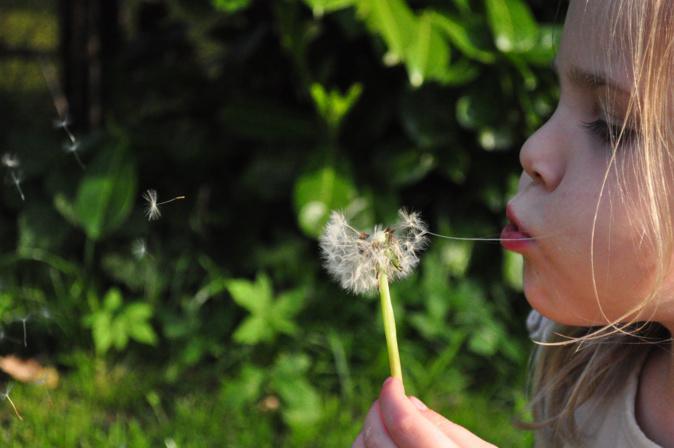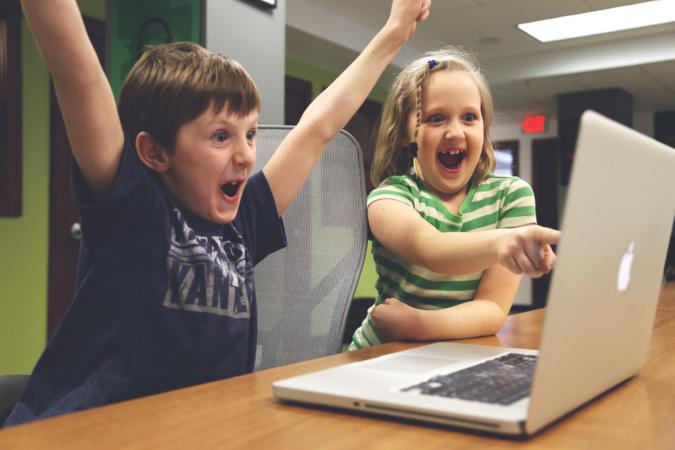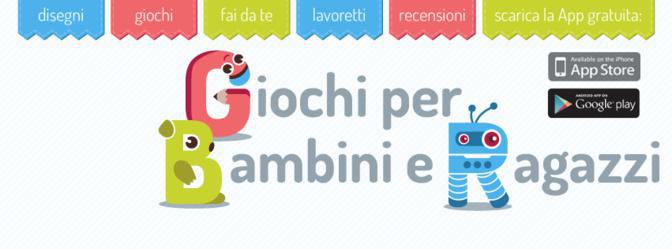Technology Within a Child's Reach
Written by GoodBarber Team on

The remains of the first toys date date back over 2,000 years and include many indications of hide and seek and ring around the rosie. But it was not until the 17th century that the first studies were done proving the importance of play in the learning and developmental process of a child. J. Goldsteins declared that "the game is the prism through which children experience their world and the world of others".
Playing is a vital part of a child's health, as it generates positive emotions. As an only child with no cousins nearby, my childhood required a little imagination and creativity. My bunk bed became my dream home, my lamp was my friend the owl, I mixed magic potions to defend myself from monsters, all with a princess braid in my hair.
Playing is a vital part of a child's health, as it generates positive emotions. As an only child with no cousins nearby, my childhood required a little imagination and creativity. My bunk bed became my dream home, my lamp was my friend the owl, I mixed magic potions to defend myself from monsters, all with a princess braid in my hair.
The era of the digital kid

In more recent years, I have noticed a completely new generation. Personally, I only had my first encounter with a computer in sixth grade, but nowadays kids interact with smartphones, tablets, computers, and other technological devices from the very first months of their lives.
In 2011, a survey from AVG (a company known for anti-virus software) tried to define the way in which the interaction between children and technology has evolved. Currently, the most common competency amongst children is solving a puzzle (77%) which is followed directly by using a mouse (69%). 66% of kids know how to turn a computer on and off, while only 11% are able to tie their shoes.
Another survey conducted in late 2012 by Eurispes and Telefono Azzurro shows that 44% of kids use a computer for at least an hour a day and 62% of children between the ages of 6 and 9 own a phone—half of which are able to download an app.
In 2011, a survey from AVG (a company known for anti-virus software) tried to define the way in which the interaction between children and technology has evolved. Currently, the most common competency amongst children is solving a puzzle (77%) which is followed directly by using a mouse (69%). 66% of kids know how to turn a computer on and off, while only 11% are able to tie their shoes.
Another survey conducted in late 2012 by Eurispes and Telefono Azzurro shows that 44% of kids use a computer for at least an hour a day and 62% of children between the ages of 6 and 9 own a phone—half of which are able to download an app.
What happens in these cases?
Children can turn into passive users, trapped in a virtual reality which leaves no room for imagination. Risk for isolation, depression, and obesity then becomes a concern.
However, do not be alarmed. The advantages of digital devices are very high and it is fundamental for allowing the child to improve their cognitive integration, as long as they are not retreating into their own world.
Children can turn into passive users, trapped in a virtual reality which leaves no room for imagination. Risk for isolation, depression, and obesity then becomes a concern.
However, do not be alarmed. The advantages of digital devices are very high and it is fundamental for allowing the child to improve their cognitive integration, as long as they are not retreating into their own world.
A very special app
I would like to tell you about an app that really spoke to me: Giochi par bambini e ragazzi created by Davide Nonino.
This is an app that encourages children to create something real with their very own hands by interacting with other children as well as their parents.
It's a bit of a throwback to the world of Legos and magic kits that we all found at least once under the Christmas tree. Finally there is an application that uses current technology to encourage children to play in a more old-fashioned way.
This is an app that encourages children to create something real with their very own hands by interacting with other children as well as their parents.
It's a bit of a throwback to the world of Legos and magic kits that we all found at least once under the Christmas tree. Finally there is an application that uses current technology to encourage children to play in a more old-fashioned way.

This app is for children, but also for parents, offering them various ideas to increase moments of joy and sharing with their kids.
You can find many ideas for birthday parties, and how to entertain kids easily and naturally. Several videos are available on how to carry out these ideas, each made with the help of artistic individuals and creative parents. The activities they suggest are unique and full of creativity: they range from Mother's Day greeting cards to designing carnival masks to creating puppets, necklaces, etc.
You can find many ideas for birthday parties, and how to entertain kids easily and naturally. Several videos are available on how to carry out these ideas, each made with the help of artistic individuals and creative parents. The activities they suggest are unique and full of creativity: they range from Mother's Day greeting cards to designing carnival masks to creating puppets, necklaces, etc.
There are also many tutorials , including wonderful drawing classes.
Why has this application been such a success?
The evolution of technology is very fast and we often don't take the time to stop and analyze it: we are okay with entering a new world without any guidance.
The dangers are there, but don't mean anything: technology is not a demon we need to fight!
This application has been a great success because it represents a perfect union between tradition and modern times, the old and the new. With over 10,000 downloads and around 750 likes on Facebook , it is an option many mothers choose for interacting with their children.
The application offers simple, feasible ideas that require very little resources that can be found in any home—no need to spend money. I personally feel very close to the DIY world, and I find this to be a fascinating idea!
The dangers are there, but don't mean anything: technology is not a demon we need to fight!
This application has been a great success because it represents a perfect union between tradition and modern times, the old and the new. With over 10,000 downloads and around 750 likes on Facebook , it is an option many mothers choose for interacting with their children.
The application offers simple, feasible ideas that require very little resources that can be found in any home—no need to spend money. I personally feel very close to the DIY world, and I find this to be a fascinating idea!
Translated by Ali Soroka